The human dimension is…
- A deviation from the traditional top-down system.
- A tendency towards organizational improvement from the bottom up.
Key idea: building human capital and thus
- Increasing the efficiency of an establishment;
- Through increasing the individuals’ and teams’ capabilities.
Chapter 5 of the book “Organizational behavior in education” emphasizes the human element in educational organizations. Traditionally, any organization is viewed as a top-town structure: a leader that gives instruction to the subordinates. The focus on human element is a shift from the traditional perspective. It regards an organization as an entity that can improve from the bottom up. In other words: every employee matters.
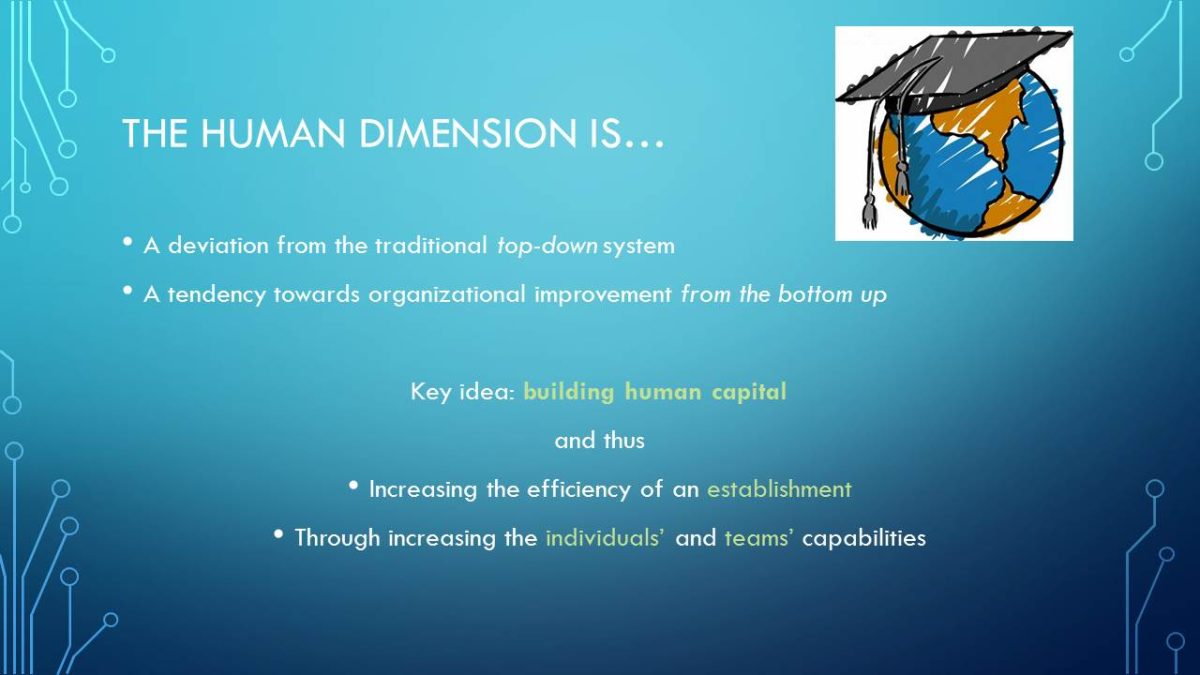
Organizations as loosely coupled systems
A loosely-coupled system is a metaphor for an organization that is:
- not hierarchical;
- consists of closely related elements (subsystems);
- allows these elements to maintain their autonomy.
One can think of such an organization as a zipper, where the elements are fitted tightly but autonomous at the same time.
The human element is specifically important in the context of schools. The chapter asserts that school works as a loosely-coupled system. It means that a school is not a hierarchy. Quite on the contrary: it consists of many subsystems that are related to each other, but are autonomous at the same time.
One can think of such an organization as a zipper: all elements fit tightly into each other, but every element has its autonomy.
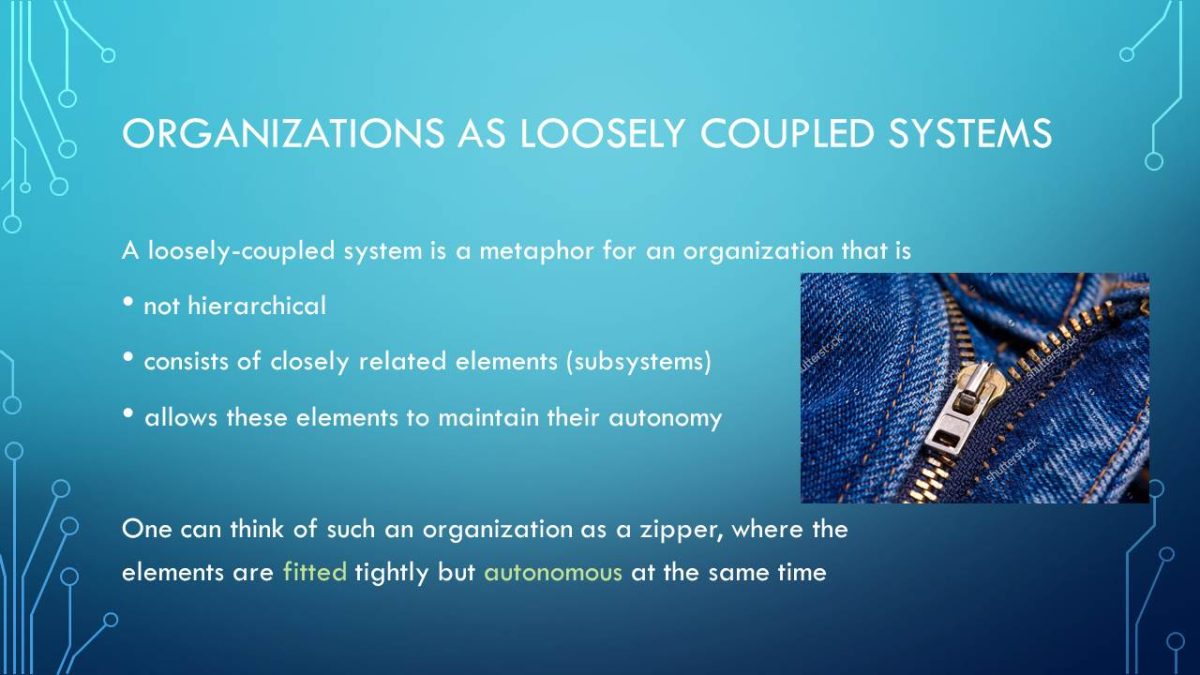
Organizations as dual systems
John Meyer and Brian Rowan:
- Loose coupling over instruction administrative control over instruction (time, assignments, grouping, etc.).
- Tight coupling over non-instruction control over transportation, fees, etc.
The chapter draws an example of another study that agrees with this metaphor. However, it indicates that schools cannot function as loose systems only. Instead, they are a combination of tight and loose coupling, which is called a dual system. Such a system includes loose coupling to control the instruction and tight coupling to control other things such as transfer, fees, and so on.
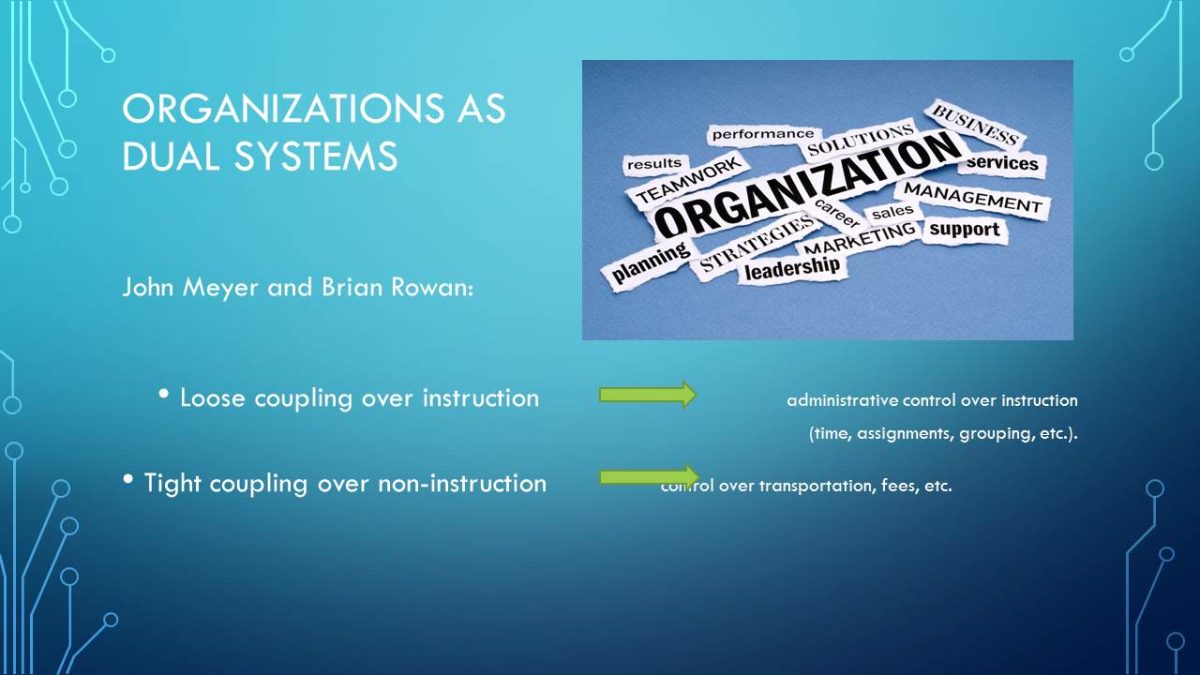
Building human capital
Education = Investment in human capital
“Providing education is one thing, and having quality education is completely different. Unless you have quality education, you are wasting your time and your resources.” (Education in the United Arab Emirates 2012).
This is why educational reform in the UAE is focused on human capital development in terms of:
- Better preparation;
- Accountability;
- Raising the standards;
- Proficiency and excellence.
Both systems in the school context are functioning to fulfil one important purpose: to build human capital. Generally, human capital is a collection of skills and knowledge that employees possess. Schools have a very important role in building human capital, because school is the place where future employees acquire knowledge. By investing in education, we invest in human capital.
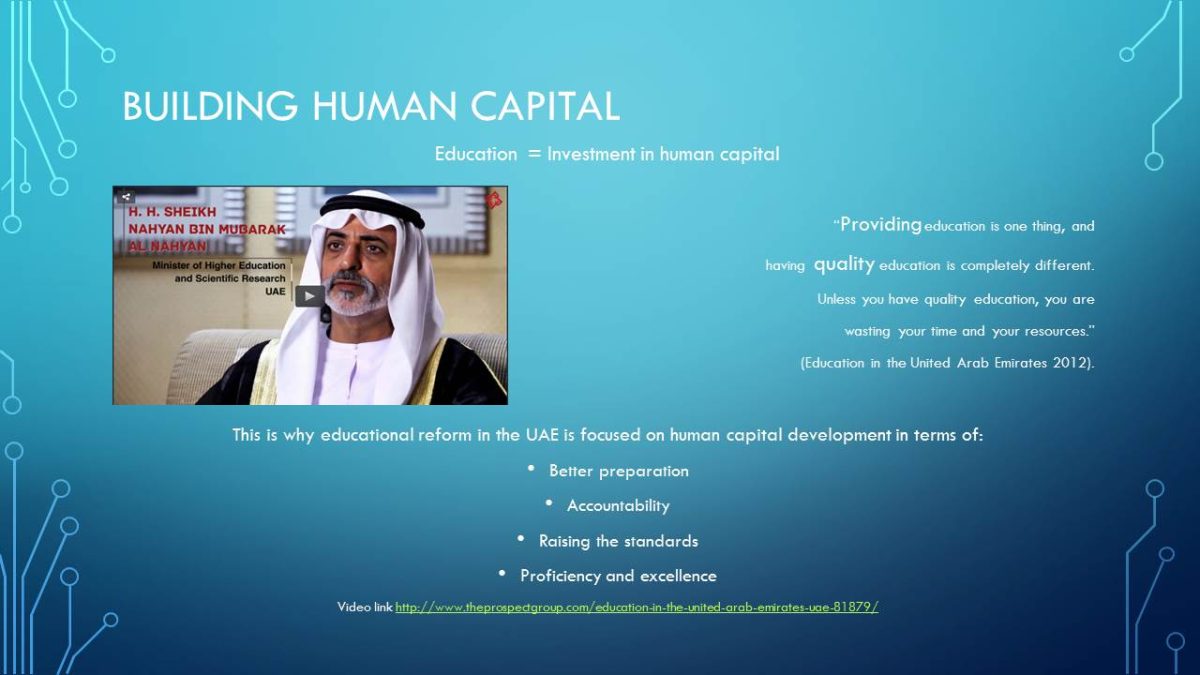
Human resources
Human resources = Assets:
- Flourish in a positive environment;
- Reduced efficiency in a negative climate;
- Decline in value over time;
- Increase in value if developed.
Development by means of:
- Organizational culture;
- Professional development.
To achieve these goals, human resource management is needed. Human resources are the constituents of human capital, so they are regarded as assets to an organization. At school, teachers and other staff have every characteristic of assets. First, they perform their best when the environment is supportive and positive. Second, when the environment is not supportive, the quality of their performance is decreased. Third (and sadly enough), the older they get, the more likely are they to perform worse. And finally, development helps them to increase the quality of their performance.
This simple logic means that development is a key to the human recourses’ performance. This can happen through either organizational culture or professional development.
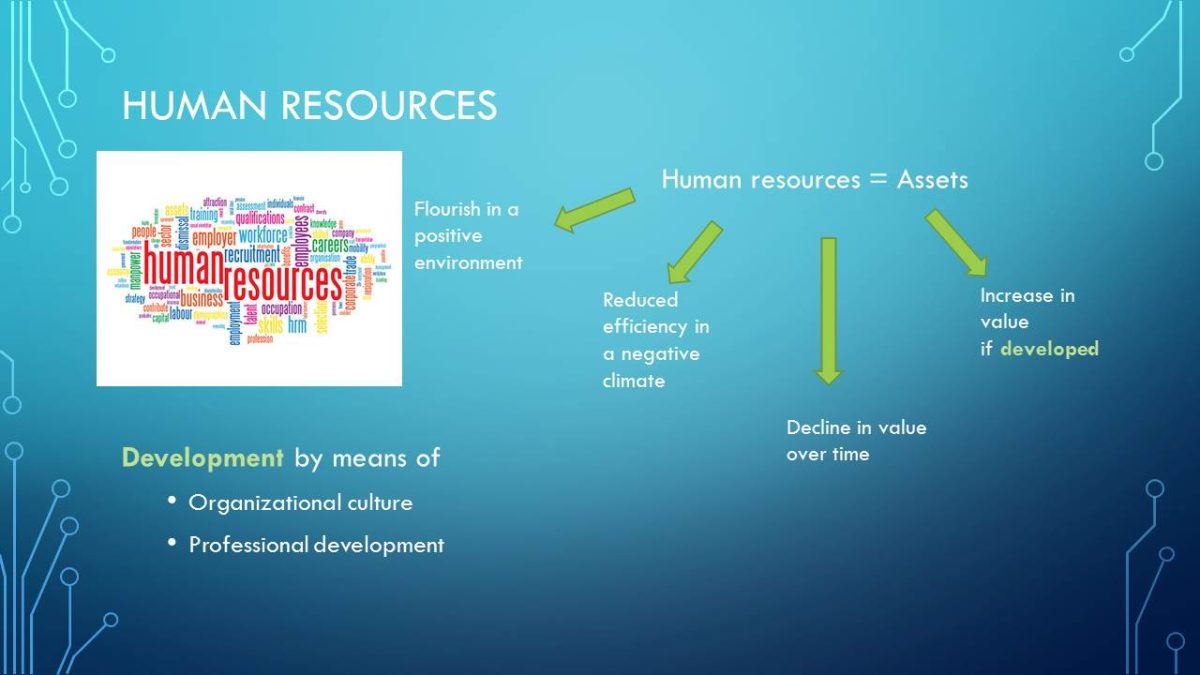
Organizational culture
Culture: norms, values, and beliefs to guide an organization.
It consists of the observable (e.g., bells to schedule the classes, dress code) and the non-observable (e.g., a belief that all children are capable of learning the curriculum).
Organizational culture if a set of values, attitudes, beliefs, and norms that guide an organization. In this respect, organizational institutions are quite similar to any corporate culture. The culture can manifest itself visibly, which means that some of its features are observable. For example, bells to schedule the classes are a manifestation of observable cultural norm. Other features are hidden, intrinsic, which means that no one can observe them. These features are the beliefs and values that are envisioned by the leaders and shared by the staff. For example, the motivation for academic excellence and high standards results from the belief that all children can learn the curriculum.
It is easier to imagine organizational culture as an iceberg. What is observable is at the top, and what is non-observable is hidden under the surface. There are many more features of organizational culture that are non-observable, and they are more important than the apparent ones.
Culture is a critical factor in developing human resources. As we learned earlier, assets cannot perform well in a negative environment. Improving the culture if one of the ways to improve the teachers performance – especially, by adopting a high purpose and fostering ethical values.
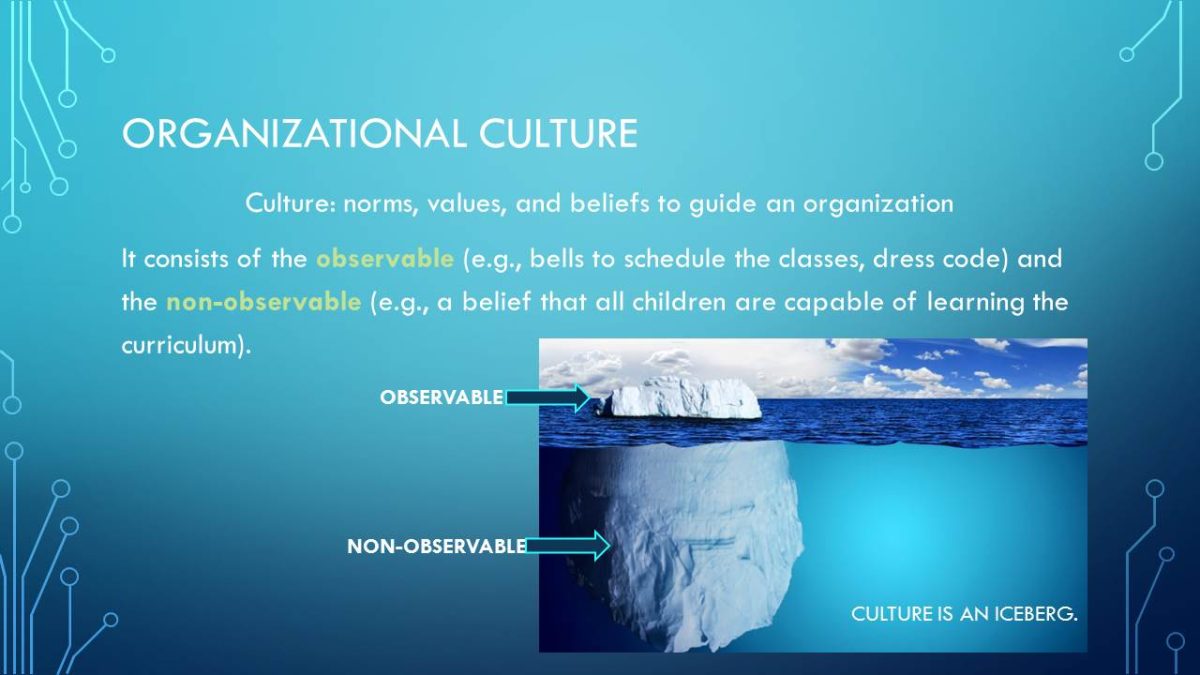
Professional development
- professional development;
- quality human capital;
- better performance;
- professional development is the key for meeting organizational goals.
Development requires HR accounting!
How to account for human resources correctly? (several answers):
- Replace older (reduced-value) educators with younger (more motivated and progressive);
- Regard the expenditures on professional development as returns on investment;
- Develop older educators only (to catch up on the relevant knowledge that the younger ones have);
- Task the educators: the responsibility for professional knowledge is theirs.
Teachers’ professional development enhances students’ performance.
Research shows that teachers’ training, certification, and development are predictors of students’ academic success (Owens 2004).
Investments in teachers’ professional development are quite justified. A folklore wisdom says that teachers should never stop educating themselves. In other words, they must be always ready to upgrade their knowledge, and the task of school management is to help them financially. It is a reasonable investment because students’ performance is enhanced when teachers develop professionally. The chapter states that there is a considerable body of research to support this supposition.
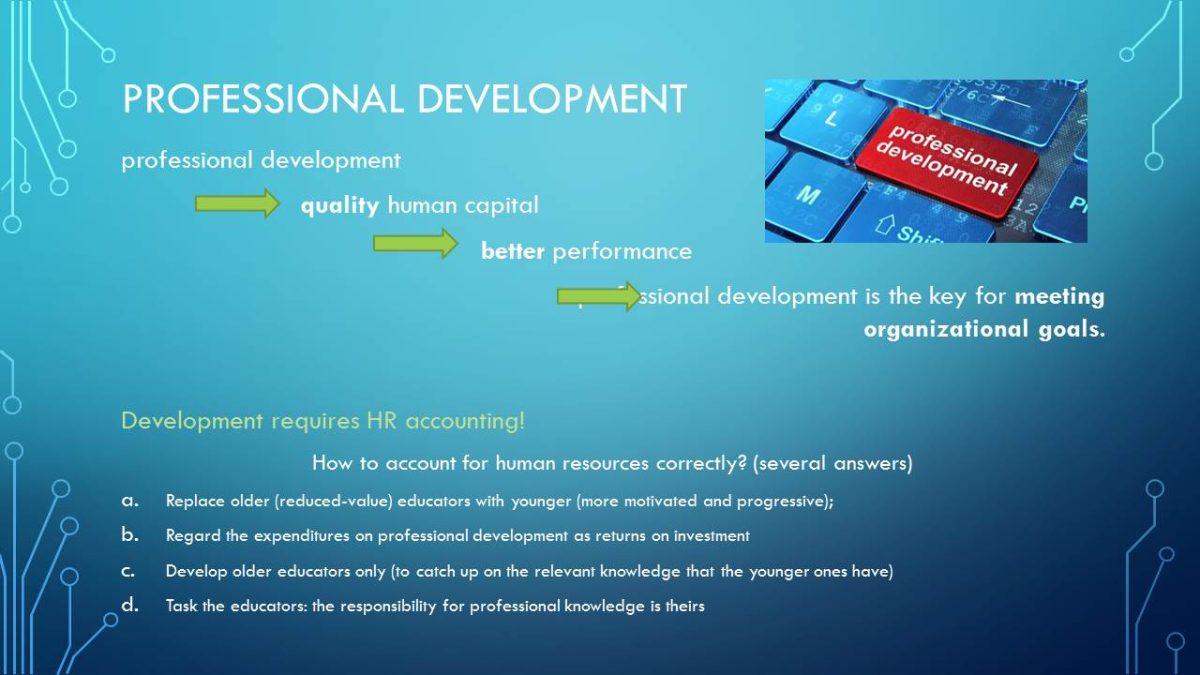
Basic assumptions of effective schools
- A school’s success is measured by students’ progress;
- A school’s responsibility is to provide environment for teaching and learning;
- A school must meet the needs of all students;
- A school’s most important characteristic is the staff’s behavior and attitudes (the observable and non-observable parts of the iceberg);
- The students’ successes and failures are the school’s responsibility.
From these perspectives, the chapter derives several basic assumptions of what an effective school should look like.
First, it states that the primary purpose of schools is to teach. It means that the school’s success is measured by how successful its students are.
Second, it should take care of its human resources and all other stakeholders. It is responsible to provide optimal scholarly environment for better performance.
Third, a school must not overlook anyone’s needs. It must treat all students holistically and meet their requirements to support learning.
Next, culture is one of the most crucial characteristics of any school (apart from the quality of education). In other words, it should watch both how the teachers and staff behave (the observable) and what values they cherish (the non-observable).
Last but not least, a school can share the joy of its students’ success, but it should always be ready to account for its students’ failures.
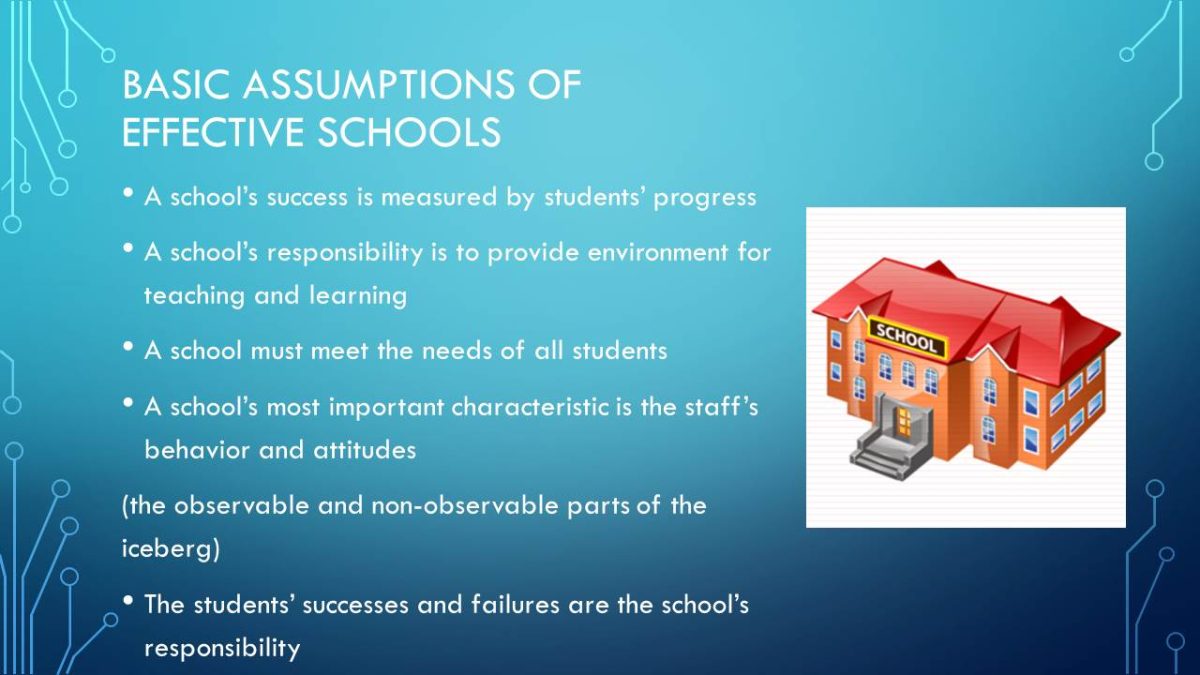
Effective educators
- A skilled teacher carefully observes his or her students’ growth.
- A skilled teacher adjusts their teaching to the student’s specific needs and review their development during the term.
- A proficient teacher may not always be liked at the moment, but is always appreciated later.
There are numerous characteristics and teaching approaches that proficient teachers should possess. Evidently, a great teacher loves to teach children, establishes a friendly attitude, and is able to be in connection with his/ her students. There are numerous features that make teachers special. Even though a particular set of assets does not exist, it does take a seamless balance of more than a few talents and teaching approaches to actually form an expert teacher. This kind of teachers will be unaffectedly recollected and have a lifelong impact on every schoolchild. A skilled teacher carefully observes his or her students’ growth. They become the advice-givers for their students, and they are willing to give a helping hand to those who did not understand the lesson. They adjust their teaching to the student’s specific needs and review their development during the term. Proficient tutors utilise an assortment of grouping activities and tactics to acclimatise to all learning styles. A proficient teacher is an expert in what he or she teaches his/ her students. They help their students and motivate them to knuckle down and be effective. Usually, the most proficient tutors are those who are remembered as the individuals who helped the students to prepare for the future life. A proficient teacher may not always be liked at the moment, but is always appreciated later.
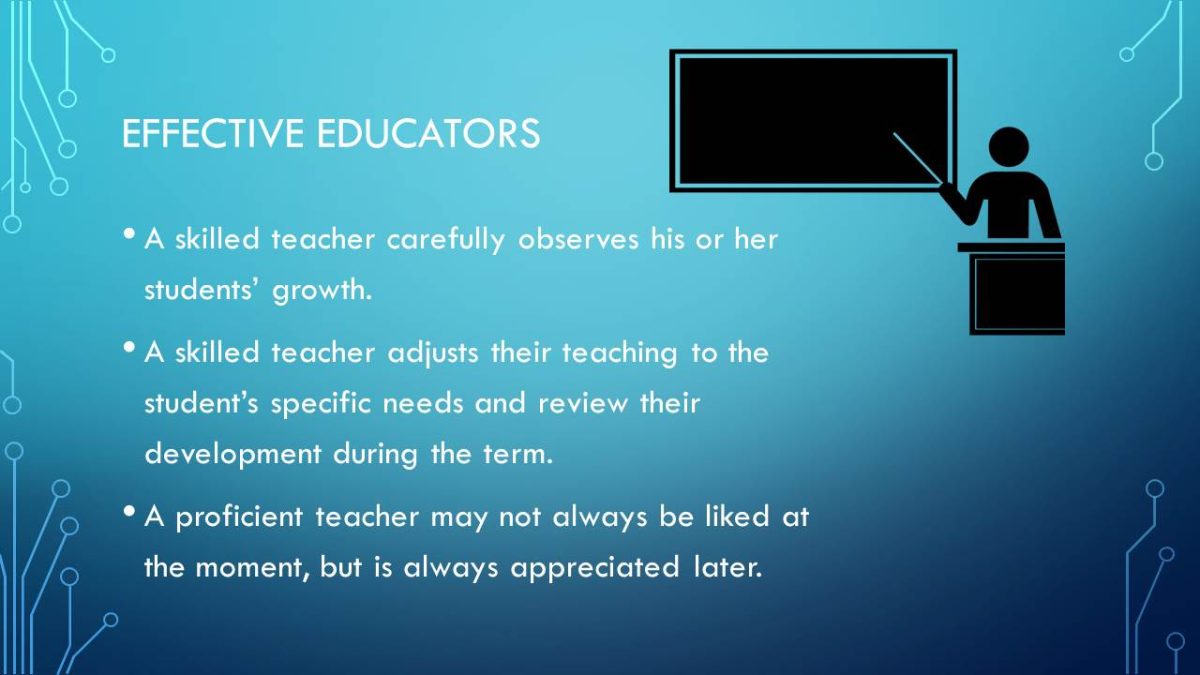
Importance of teacher development
- Good students would not exist without good tutors.
- It is important to take into considerations the approaches that are utilised to train and sustain both new and qualified teachers.
- Funding and backing for new teachers are regularly uneven and insufficient.
It is true that good students would not exist without good tutors. Actually, research illustrates that an inspirational and well-versed teacher is the most vital factor influencing student achievement relating to school. Therefore, it is important to take into considerations the approaches that are utilised to train and sustain both new and qualified teachers. Funding and backing for new teachers are regularly uneven and insufficient. It may happen that even the most organised new tutors are sent to the most challenging educational institutions and classes with weak management and funding.
- More than 50% of the new teachers quit before they work as a tutor for at least five years;
- It is important to have constant and consistent prospects to acquire knowledge from each other;
- Teacher development is linked to working with students and stems from understanding their values.
The research states that more than 50% of the new teachers quit before they work as a tutor for at least five years, so more consideration should be given to providing them with appropriate and satisfactory sustenance, exclusively if they are assigned to challenging school settings. It is important for expert tutors to have constant and consistent prospects to acquire knowledge from each other. Continuing specialised training keeps teachers conversant on the new investigation on how children study, evolving technology utensils for the teaching space, innovative course resources, and so on. The greatest expert development is enduring, pragmatic, and cooperative. It is linked to working with students and stems from understanding their values.
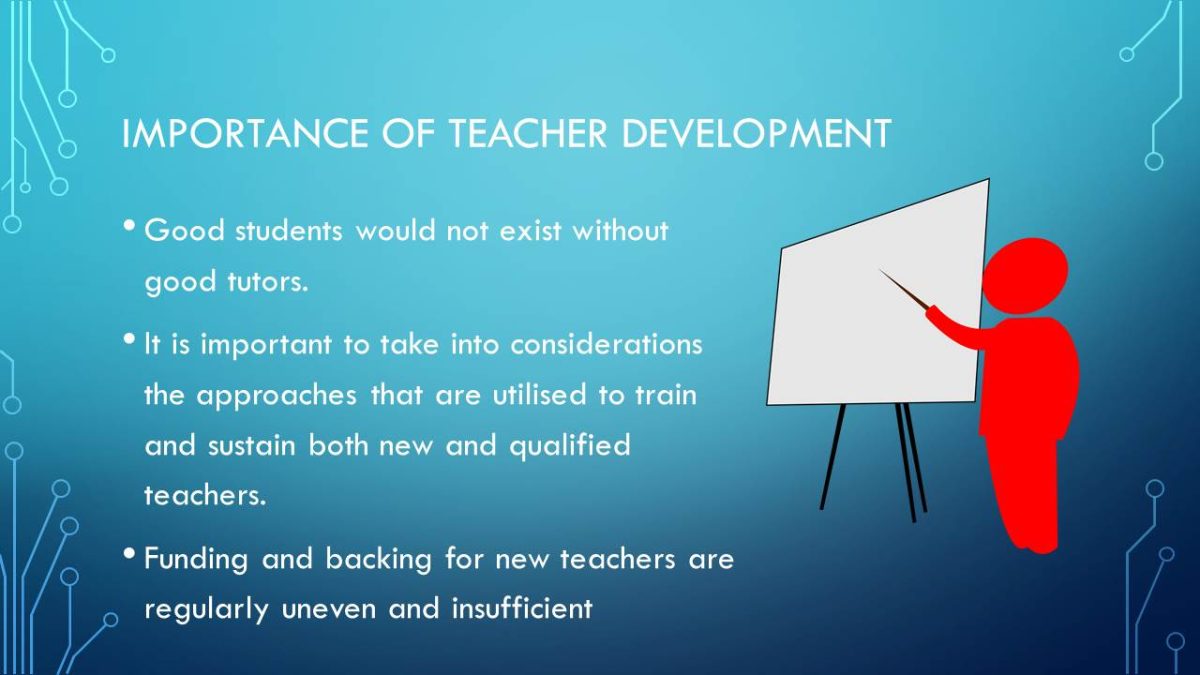
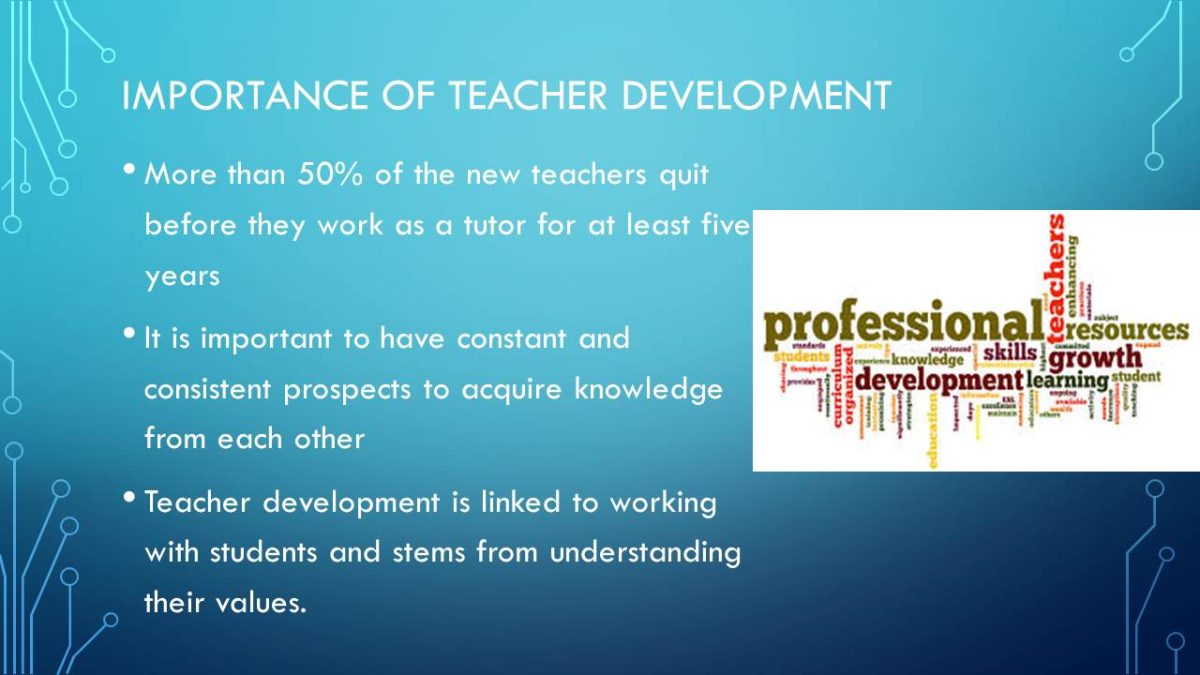
School improvement research
Improvement by administrative means:
- School-site management;
- Meeting the needs of all students (curriculum);
- Democratic decision-making;
- Staff development;
- Collaborative problem-solving;
- Parental involvement;
- Local government and community support;
- Academic success appraisal;
- Strong leadership: administrators or distributed leadership;
- Time management;
- Staff stability by developing an integrated school culture.
Based on all this, the chapter formulates several key aspects of improvement that can be implemented by managerial means. These include:
- School-site management and collective decision making to make whole schools responsible for solving problems in education;
- Gaining local government’s support – to help the schools more effectively solve these problems;
- Strong leadership: distributed leadership is better because the issues can be resolved in a team more efficiently;
- School culture of integrity to stabilize the staff and enhance their performance;
- A curriculum to meet the needs of all students;
- Investments in staff development to further improve their performance and meet the organizational goals;
- Involving the parents and gaining their support;
- Appraising the academic successes of the students in a timely manner – to increase their motivation;
- Emphasizing the importance of adequate time management to promote efficiency in learning.
These can be regarded as guidelines for each individual school. In summary, accounting for human dimension of education is critically important because the quality of human resources is the key to meeting the goals of every school.
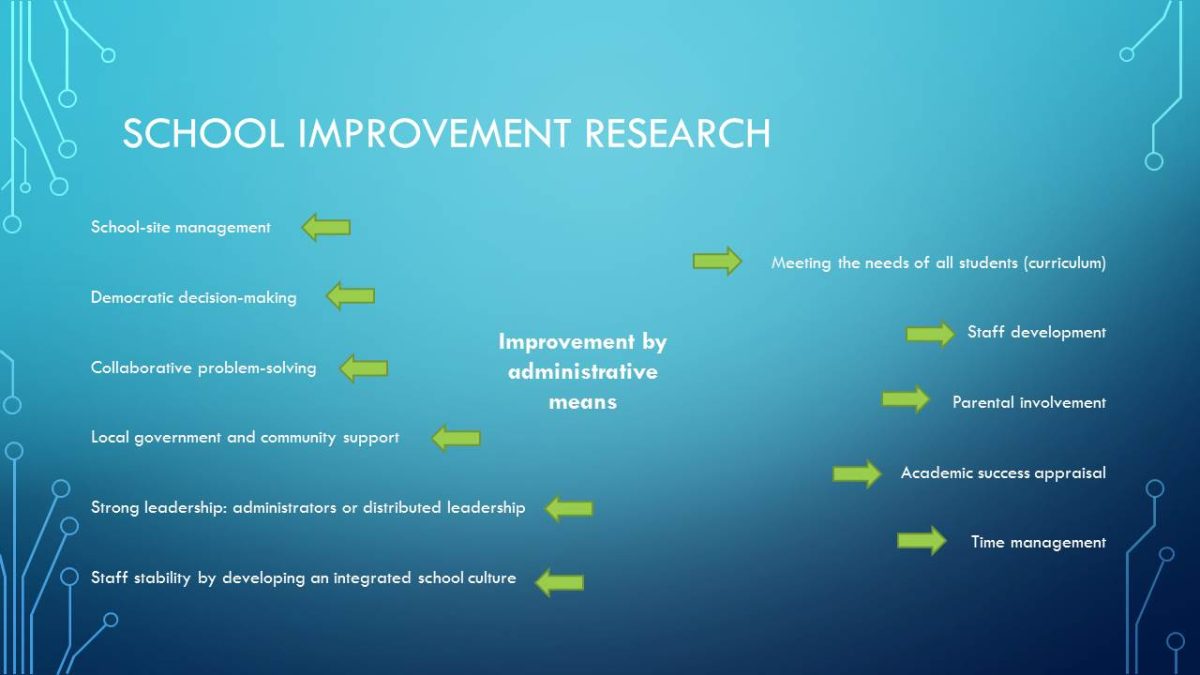
Advice for educators
- Being skilled or having a degree does not prove efficacy;
- There are several important imperceptible factors, such as a teacher’s temperament and behaviour.
Not a lot of new teachers seem to be a perfect fit when they first enter the classroom. The candidates must pay attention to the characteristics they can enhance and which they cannot. Being skilled or having a degree does not prove efficacy. School administration should be more attentive when examining the teachers. Simultaneously, there are several important imperceptible factors, such as a teacher’s temperament and behaviour, that can still be perceived through the observations of the teacher and detailed interviews.
Thank you for your attention.
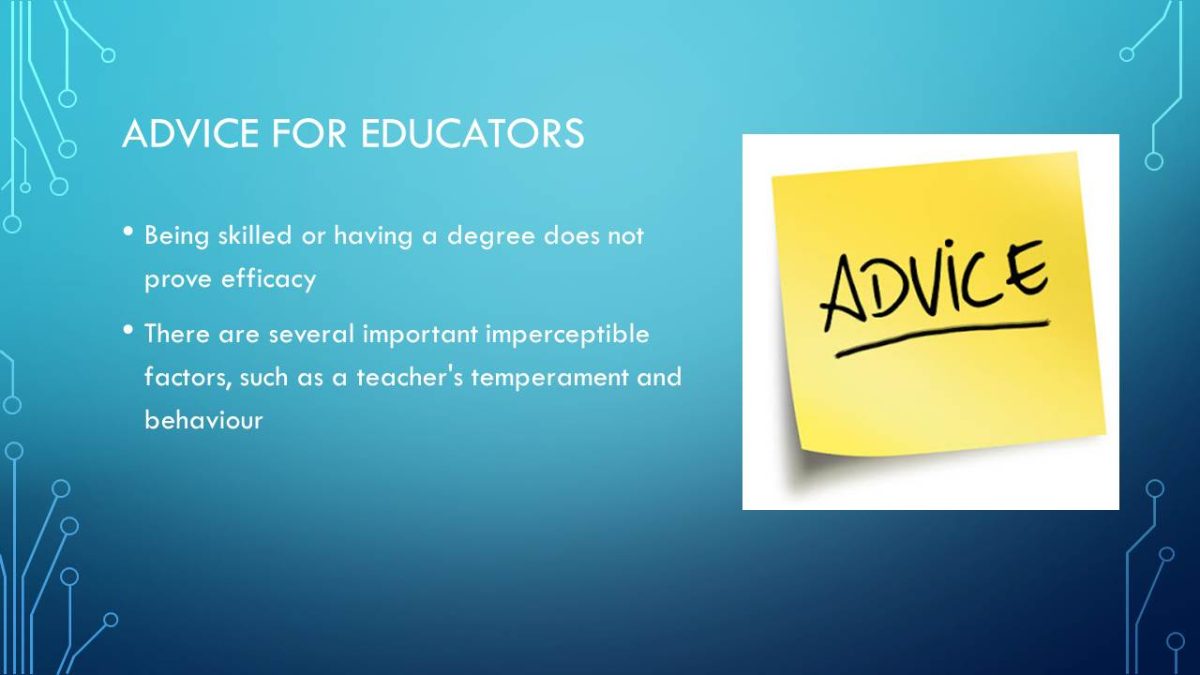
References
Education in the United Arab Emirates (UAE). (2012). Web.
Owens, R.G. (2004). The Human Dimension of Organization. In Organizational Behavior in Education: Adaptive Leadership and School Reform. Pearson/Allyn and Bacon, Boston, pp. 152-174.